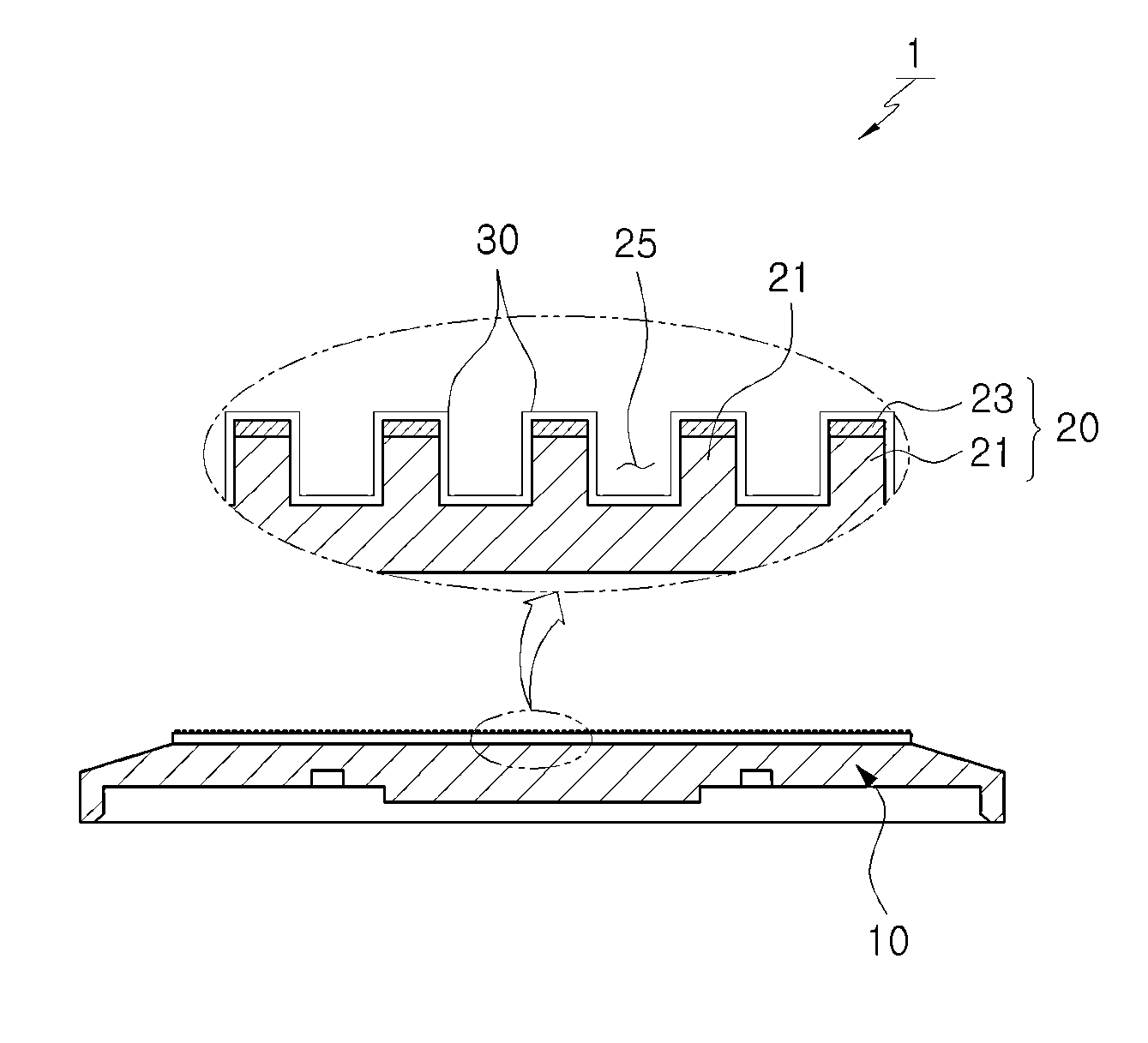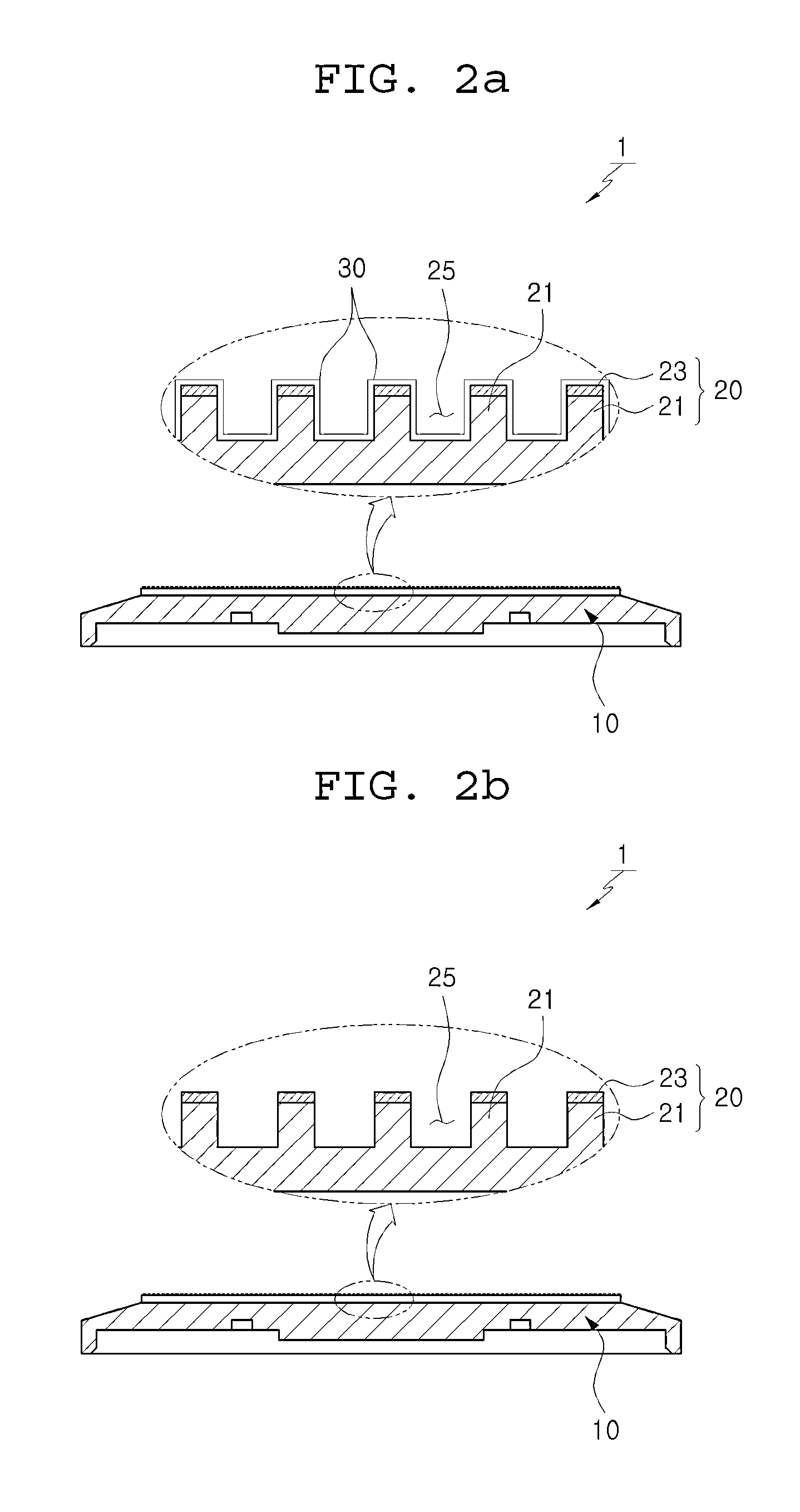Cmp pad conditioner
a technology of mechanical polishing and conditioner, which is applied in the direction of grinding drive, grinding drive, abrasive surface conditioning device, etc., can solve the problems of non-uniform deformation of the surface of the polishing pad, limitation that cannot be overcome by partial planarization, and the minimum line width can be reduced, so as to achieve efficient removal of debris, increase the productivity of the cmp pad conditioner, and fast and easy manner
- Summary
- Abstract
- Description
- Claims
- Application Information
AI Technical Summary
Benefits of technology
Problems solved by technology
Method used
Image
Examples
Embodiment Construction
[0052]Hereinafter, the present invention will be described in detail with reference to the accompanying drawings.
[0053]FIGS. 2a, 2b, 3a, and 3b are cross-sectional views of CMP pad conditioners wherein all the cutting tips of cutting patterns include substrate tip portions and deposition tip portions. FIGS. 4a, 4b, 5a, and 5b are cross-sectional views of CMP pad conditioners wherein only some of the cutting tips of cutting patterns include substrate tip portions and diamond deposition tip portions. As shown in these figures, a CMP pad conditioner 1, according to the present invention, includes a substrate 10 and cutting tip patterns 20 formed on at least one surface of the substrate 10.
[0054]The substrate 10 may be made of a high-hardness material, such as a general iron alloy, a super-hard alloy, or a ceramic material, and may have a disc shape.
[0055]Herein, the material of the substrate 10 is preferably at least one selected from among SiC, silicon nitride (Si3N4), tungsten carbid...
PUM
 Login to View More
Login to View More Abstract
Description
Claims
Application Information
 Login to View More
Login to View More - R&D
- Intellectual Property
- Life Sciences
- Materials
- Tech Scout
- Unparalleled Data Quality
- Higher Quality Content
- 60% Fewer Hallucinations
Browse by: Latest US Patents, China's latest patents, Technical Efficacy Thesaurus, Application Domain, Technology Topic, Popular Technical Reports.
© 2025 PatSnap. All rights reserved.Legal|Privacy policy|Modern Slavery Act Transparency Statement|Sitemap|About US| Contact US: help@patsnap.com



